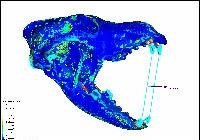Tassie tiger no match for dingo: research
The wily dingo out-competed the much larger marsupial thylacine by being better built anatomically to resist the "mechanical stresses" associated with killing large prey, according to a team led by UNSW scientists.


